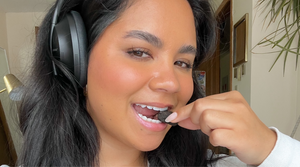Erin brings her background as an Integrative and Functional Registered Dietitian Nutritionist to the Scientific Advisory Board at GEM. Aside from GEM, she serves as a dietitian at an insurance-based functional medicine practice, has a private practice, and also teaches other Registered Dietitians how to provide effective, evidence-based functional nutrition. In addition to her Dietetics degree, Erin also has an additional certification as an Integrative and Functional Nutrition Certified Provider. She’s currently in a doctoral program for clinical nutrition.
We sat down with Erin for a short Q&A to get her perspective on GEM, functional nutrition, and ideal nutrient balances.
GEM: Tell us more about your discipline as a dietitian – what is it and why is it important?
Erin: I specialize in integrative and functional nutrition because I enjoy helping my patients achieve radical improvements of their wellness. Functional medicine seeks to find and address root causes, and also looks at the body’s systems as being interconnected. Another focus of functional medicine is providing individualized plans; you’ll never get a template handout based solely on your diagnosis. Instead, functional medicine patients are treated as the unique individuals they are. This allows my patients to experience success with their wellness goals, even if they’ve had discouraging attempts with conventional practitioners.
GEM: People often think that our nutrient needs stay the same throughout our life. Can you shed some light on the different lifestyle choices that may impact nutrition at different stages in your life & how GEM can help members in this way?
Erin: There are many factors and life events that can cause an increase in nutritional needs. Some examples of this include age, exercise, pregnancy, and breastfeeding. There are also specific health problems that can benefit from the addition of specific specialized plants and nutrients. For example, hormone imbalances can be improved by adaptogenic herbs such as ashwagandha. Lack of sleep, especially top of mind right now in the pandemic, can perpetuate hormone imbalances related to stress hormones. The GEM Sleep bite provides some of the important ingredients to optimize this sleep-adrenal connection. In another example, problems with nutritional status and immune function can impact gut health, which then drives new health challenges. So, it’s critical to optimize immune health. The GEM immune bite provides some of the central ingredients that are needed for immune support, like zinc, beta-glucan, and vitamin D3.

GEM: Speaking of immune support, a common misconception is that we only need zinc, vitamin C and elderberry for our immune system. Tell us about optimal immune system support and nutrients that can round out our diets.
Erin: The immune system is complex, with an array of nutrients required for optimal function. So, taking a large dose of one nutrient is unlikely to help. In fact, large doses of antioxidants like vitamin C or E can actually worsen immune function by decreasing the body’s own production of antioxidants. So, an optimal approach to improving immune function involves providing a complementary combination of plants and nutrients that all support the different aspects of immune health. Some of these important items include vitamin D, zinc, probiotics, and curcumin.
GEM: You mentioned taking a large dose of a certain nutrient can actually harm your immune system's response. People sometimes think that given nutrition is essential, a megadose doesn’t hurt.
Erin: Nutrition is complex in the sense that many nutrients compete with each other. So, taking a large dose of one nutrient can cause the deficiency of another. Also, some nutrients are toxic at high dosing. Additionally, some plants and nutrients have a synergy; they work best together. So, instead of taking large doses of one nutrient, it's actually best to take the right dosing of a complementary set of nutrients.
GEM: In terms of nutrients associated with better sleep, melatonin is the most commonly cited or referenced. However, supplementing with only melatonin provides a narrow solution to address sleep nutrition. Can you share with our members why GEM sleep bites provide a more holistic approach?
Erin: Melatonin is just one part of the sleep puzzle. Many other nutrients included in the GEM sleep bite (such as l-theanine, GABA, valerian root, and magnesium) help to support restful and restorative sleep in different and complementary ways. Thus, the sleep bite is more likely to address a wide variety of sleep challenges, whereas melatonin alone only helps in cases of low melatonin production. Also, melatonin can be habit-forming whereas the ingredients in the GEM sleep bite are not.
GEM: What are other common pitfalls that you see in adult women + men today when it comes to filling the gaps in their diet and getting healthier? How does GEM help to address some of those pitfalls with our “food as medicine” philosophy?
Erin: Many of the foods in our modern diets are high in calories but not high in nutrition. Even many ‘healthy’ diets have significant nutritional gaps. Most of my patients who get nutritional testing have significant nutritional insufficiencies, and these do impact their health. GEM provides a way to address these gaps in a real-food form. GEM provides a complementary combination of real-food nutrients in a method that is easy, delicious, and safe. There’s no substitute for real food, whether it be medication or a multivitamin. Yet, GEM supports the ‘food as medicine’ approach by providing a way to fill in nutritional gaps without depending on a formulated pill.






